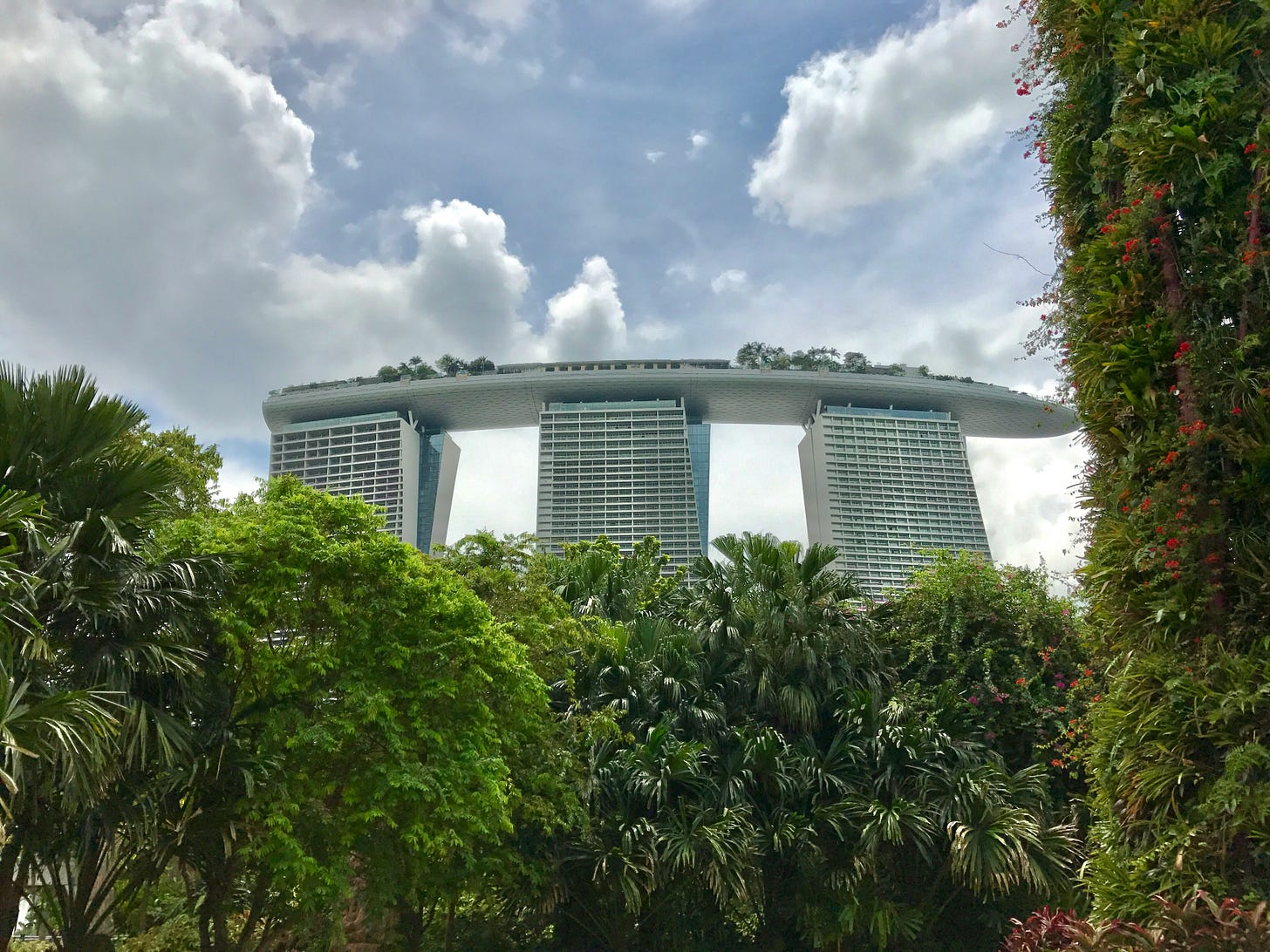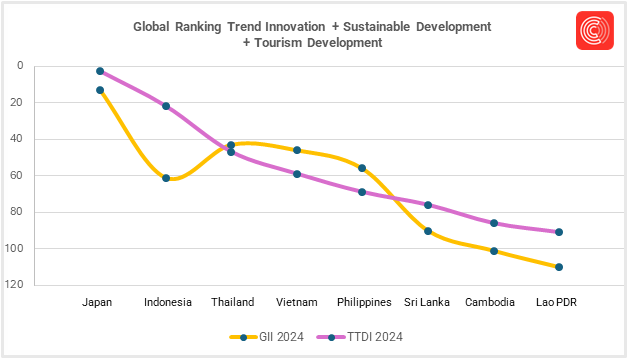The Curious Correlation Between Tourism Development and Innovation
Welcome back to Clickable Insights – where our Clickable Impact team shares perspectives on agriculture, cleantech innovation, sustainable tourism, and green finance across Asia and the Pacific. Visit our Substack to read editions by the topics most important to you.
Today’s newsletter flags an intriguing correlation between tourism development and innovation. It frames tourism development within a larger system, and it suggests a new, more holistic approach to national tourism development and management.

Innovation and Tourism Development
In the June edition of Clickable Insights, we discussed the Travel & Tourism Development Index (TTDI). The TTDI assesses destinations across five dimensions, namely Enabling Environment; Travel and Tourism Policy and Enabling Conditions; Infrastructure and Service; Travel and Tourism Resources; and Travel and Tourism Sustainability.
At the end of September, the World Intellectual Property Organization released its 17th Annual Global Innovation Index 2024 (GII). The GII ranks the innovation performance of 133 economies.
We love playing with data, so we plotted the GII against the TTDI. A clear pattern emerged:
The results are 85% correlated across East, Southeast, and South Asian economies: higher tourism development rankings track with higher innovation rankings.
We noted with interest that the countries with the most inbound visitors – Japan and Thailand – also had the tightest concentration of results across the two indices.
There are also some countries with weaker correlations. For example, Indonesia’s tourism development outperforms its relative innovation ranking. This is likely because Indonesia is punching way above its weight in three areas: prioritization of travel and tourism policies; travel and tourism demand sustainability (length of stay, seasonality, geographic concentration cultural/natural resources, flow dispersal); and natural resources.
Next, we examined nine of the 11 countries in the Central Asia Regional Economic Cooperation (CAREC) Program: the People’s Republic of China (PRC), Georgia, Kazakhstan, Azerbaijan, Uzbekistan, Mongolia, Tajikistan, Pakistan, and the Kyrgyz Republic.
Like the previous example, innovation correlates positively with tourism development in Central Asia - again at 85%.
Concluding thoughts
While this represents an initial assessment, there’s plenty to chew on. We’re particularly intrigued by the very tight alignment between tourism development and innovation in countries like Japan, Thailand, Vietnam, Uzbekistan, and Georgia – the first three of which are regional leaders in tourism arrivals. What does that say about countries’ will and ability to invest in tourism development based on their development stage and economic trajectory? What does it indicate about travelers’ preferences and perceptions?
There may be a need for more integrated policies that link these areas for a holistic development approach. We’ve frequently argued that development partners should adopt a whole-of-government approach to tourism development. Rather than focusing solely on big attractions, CBT (community-based tourism), or destination marketing cross-border circuits, consider how tourism can integrate with and contribute to investments in nature, urban infrastructure, historical preservation, inclusive development, and innovative new industries.
Special thanks to Clickable Impact consultants Trevor Weltman and Graham Harper for their contributions to this newsletter. Join us next month for more updates on climate action, transformative innovation, and sustainable tourism.
Clickable Insights is brought to you by Clickable Impact
Clickable Impact is an Asia-based consultancy committed to climate action and sustainable development. We have three practice areas: public affairs and communications, sustainable tourism, and transformative innovation. Across our work, Clickable Impact favors projects that urgently mobilize private sector engagement, policy action, and investment.
All views expressed in this newsletter are our own.
Copyright © 2024 Clickable Impact, All rights reserved. You are receiving this email because you opted in via our website.
Our mailing address is:
House 20A, 11/5 To Ngoc Van, Quang An, Tay Ho
Hanoi, Hanoi 11207
Vietnam





